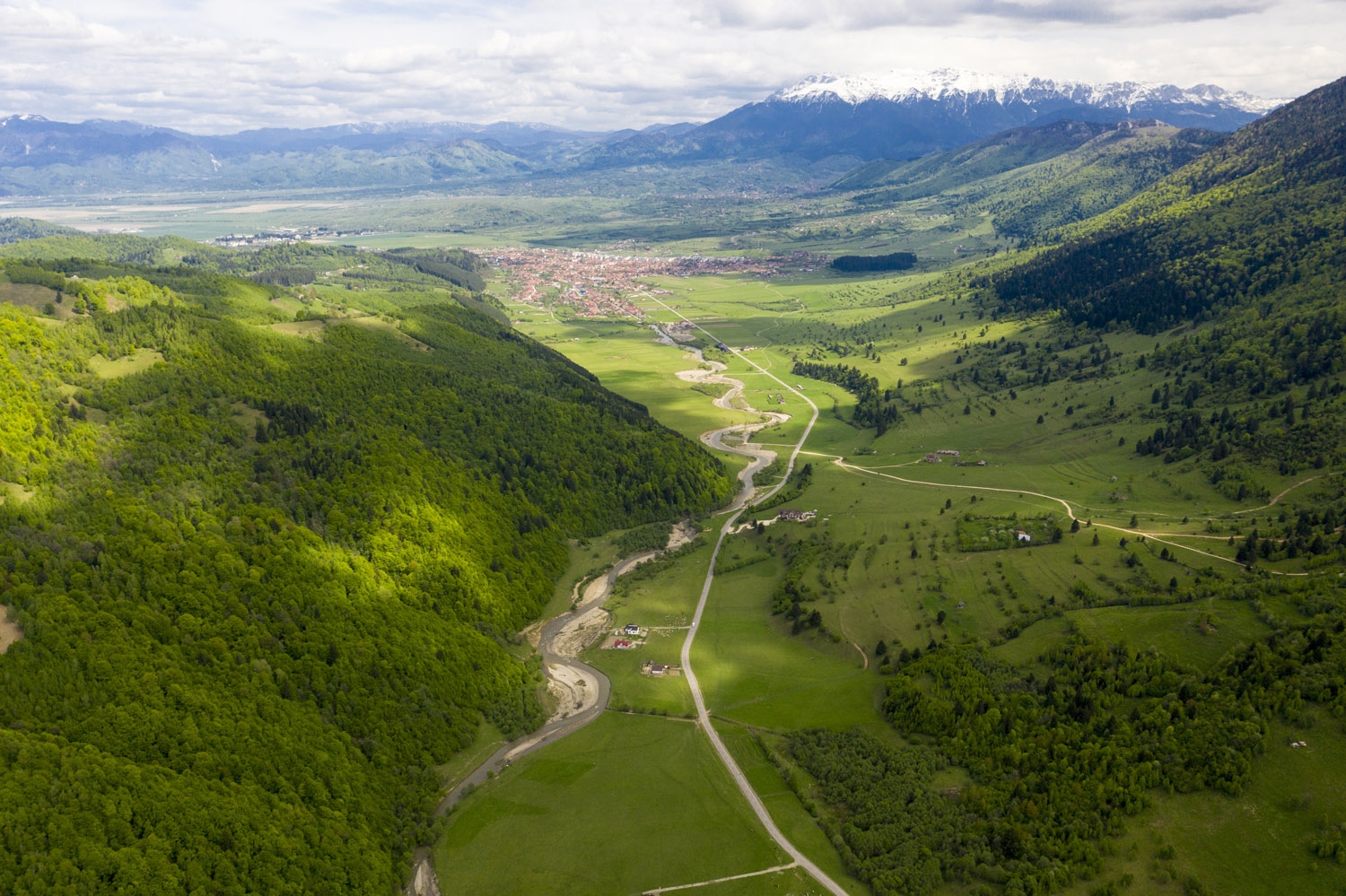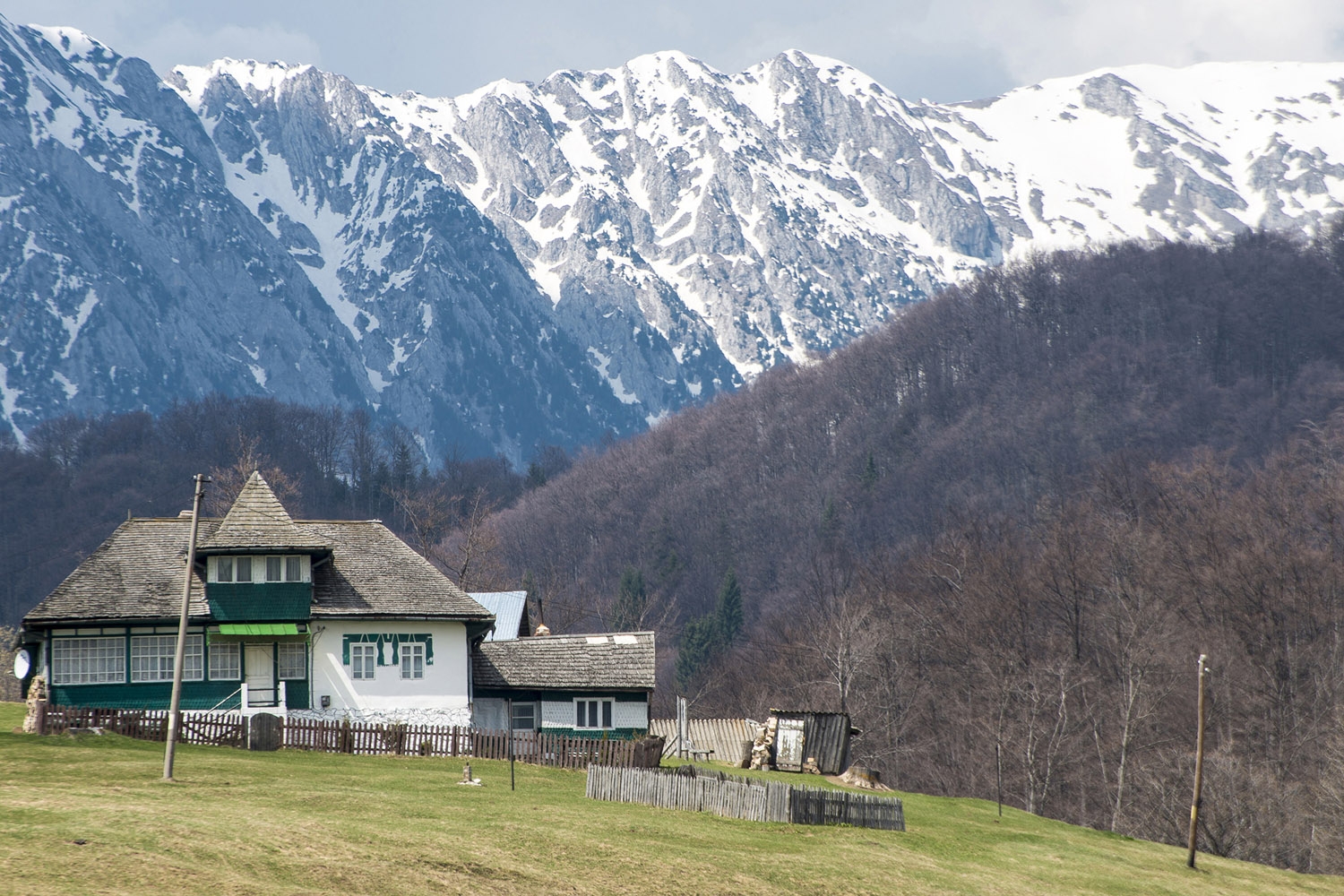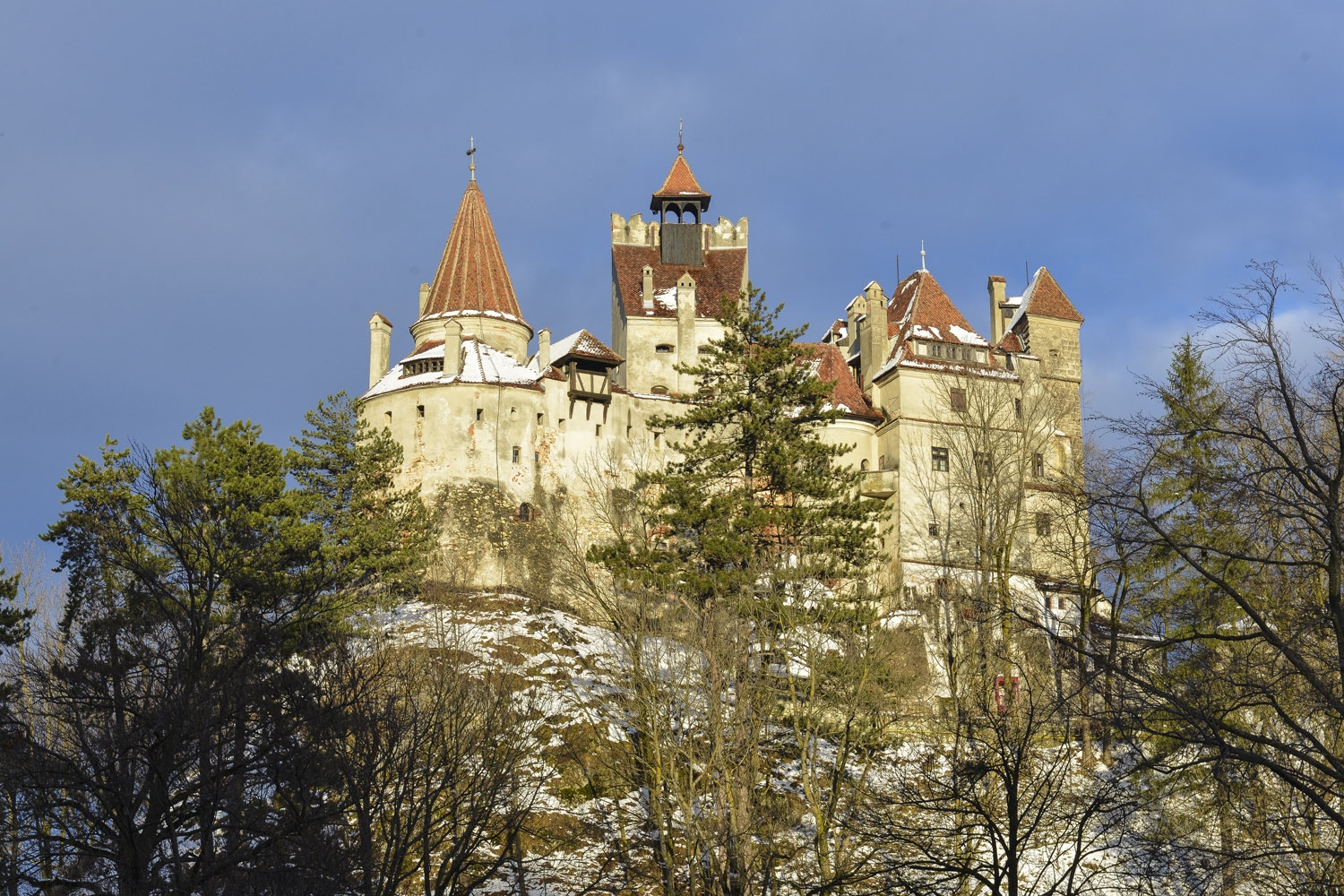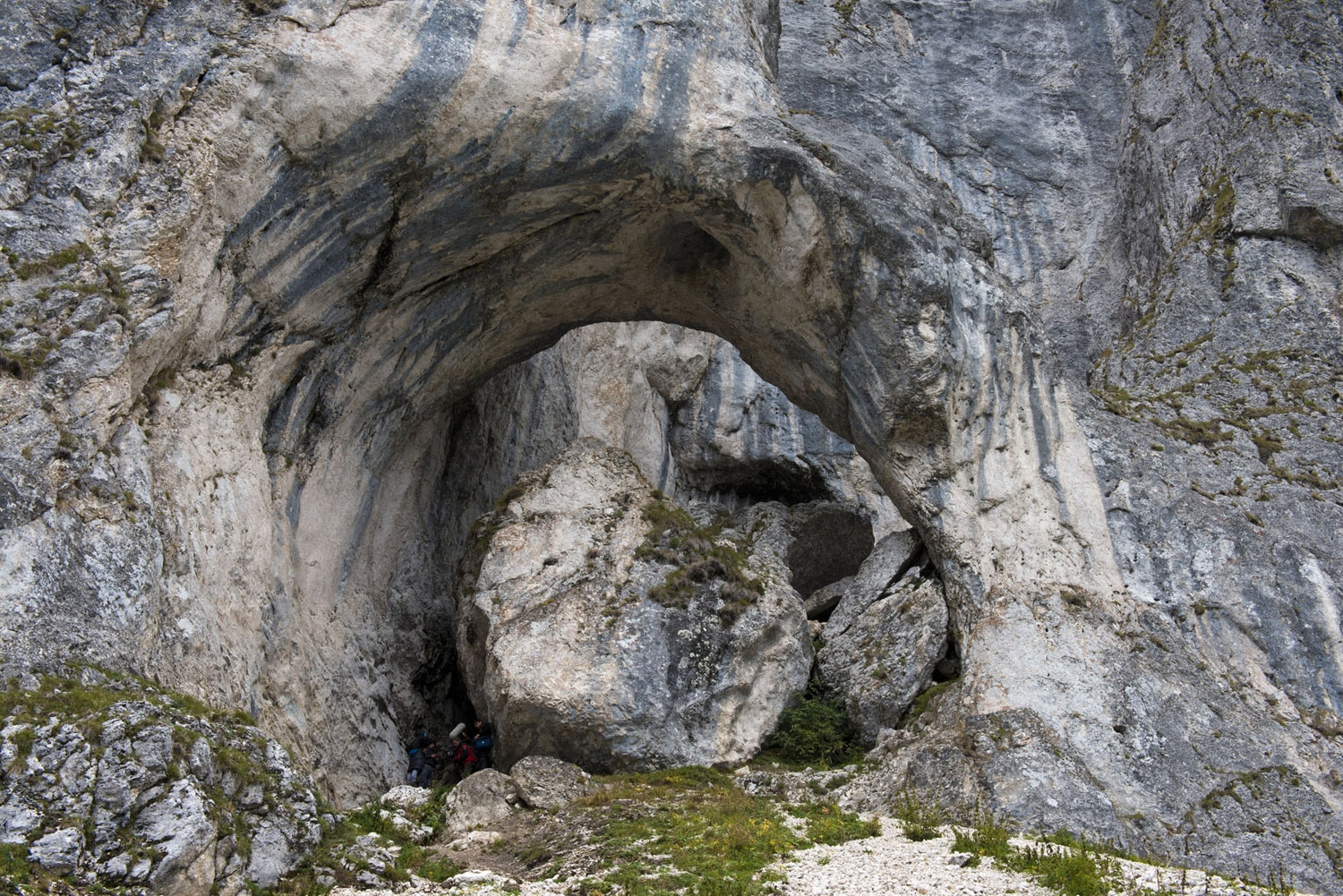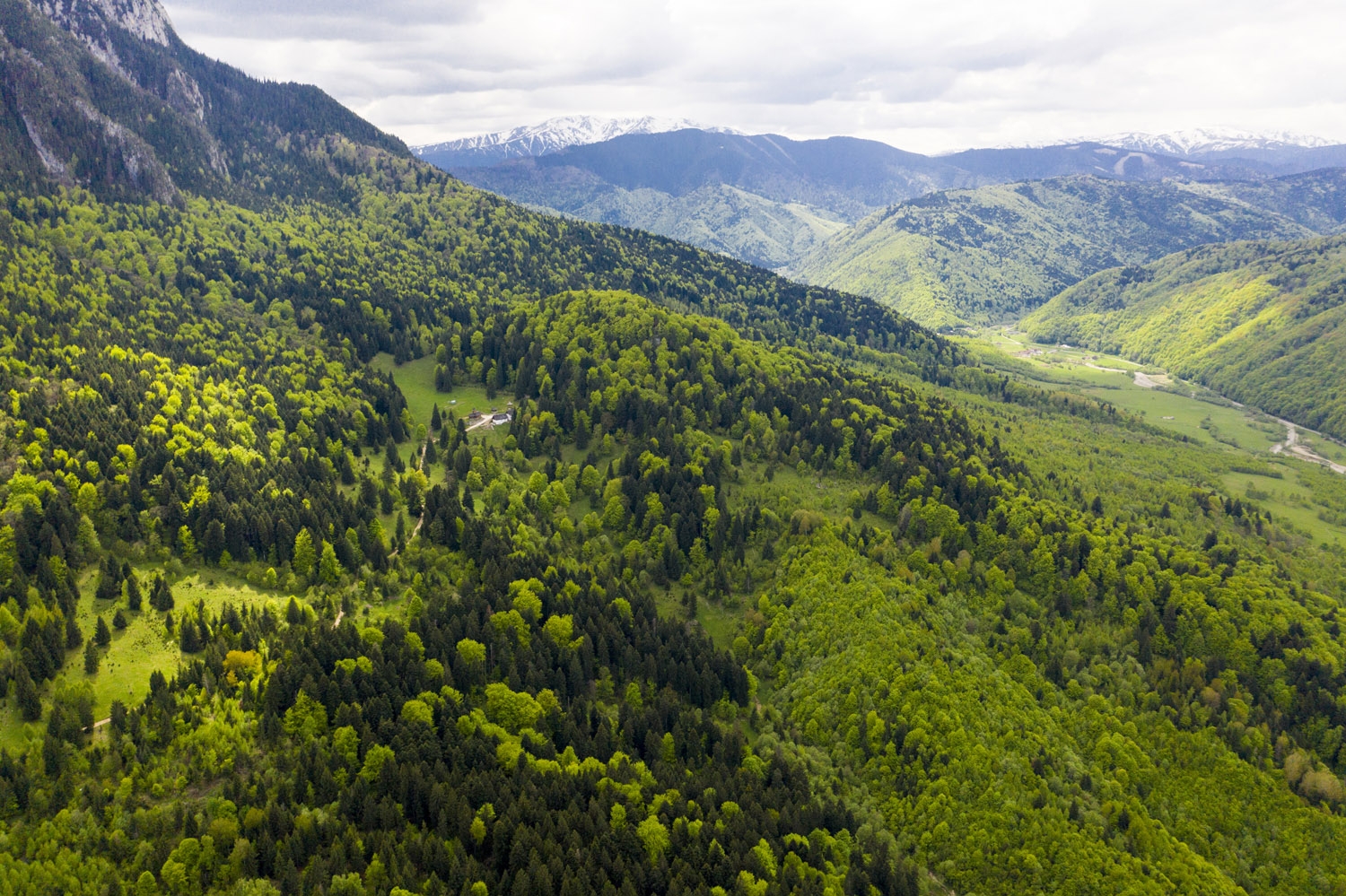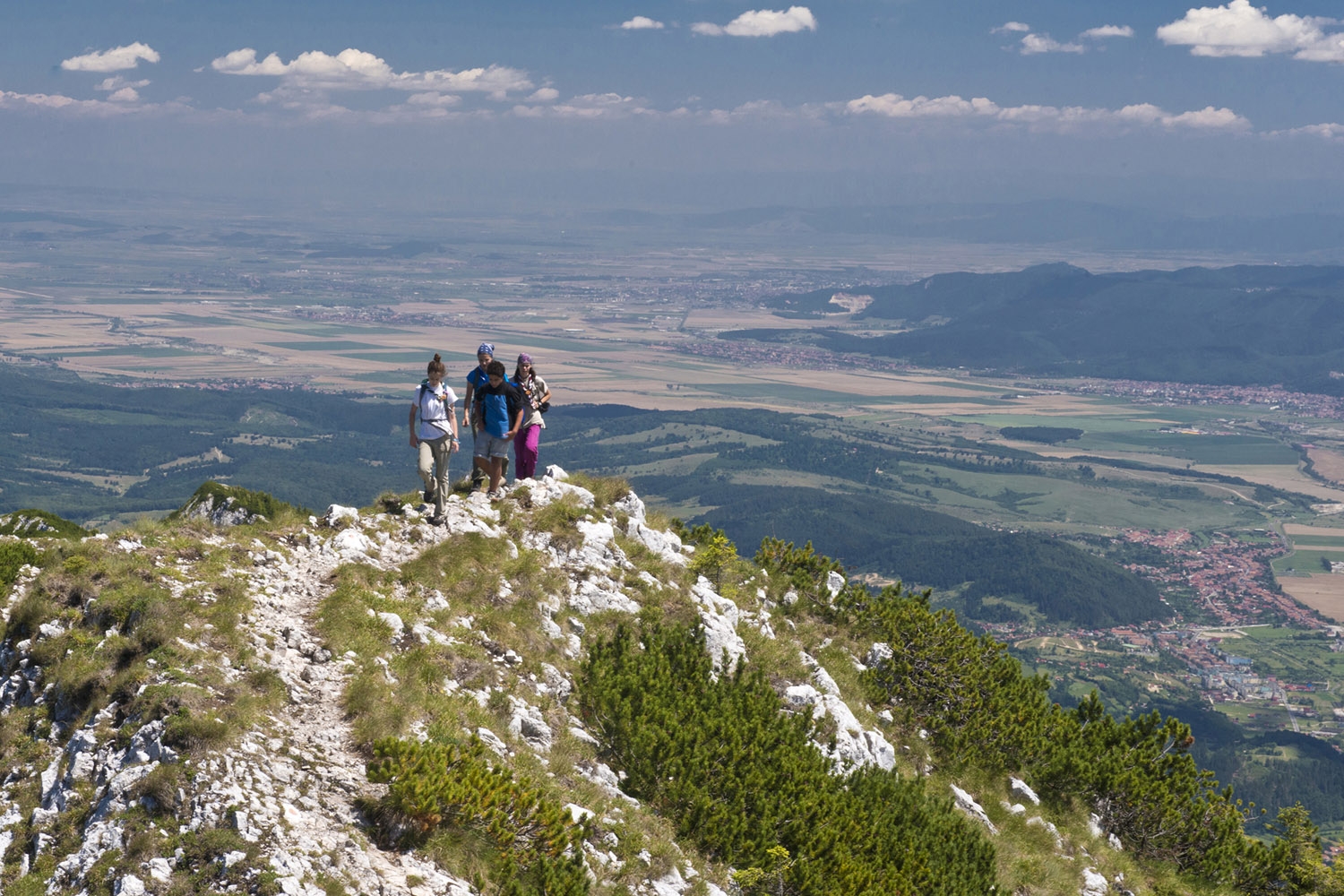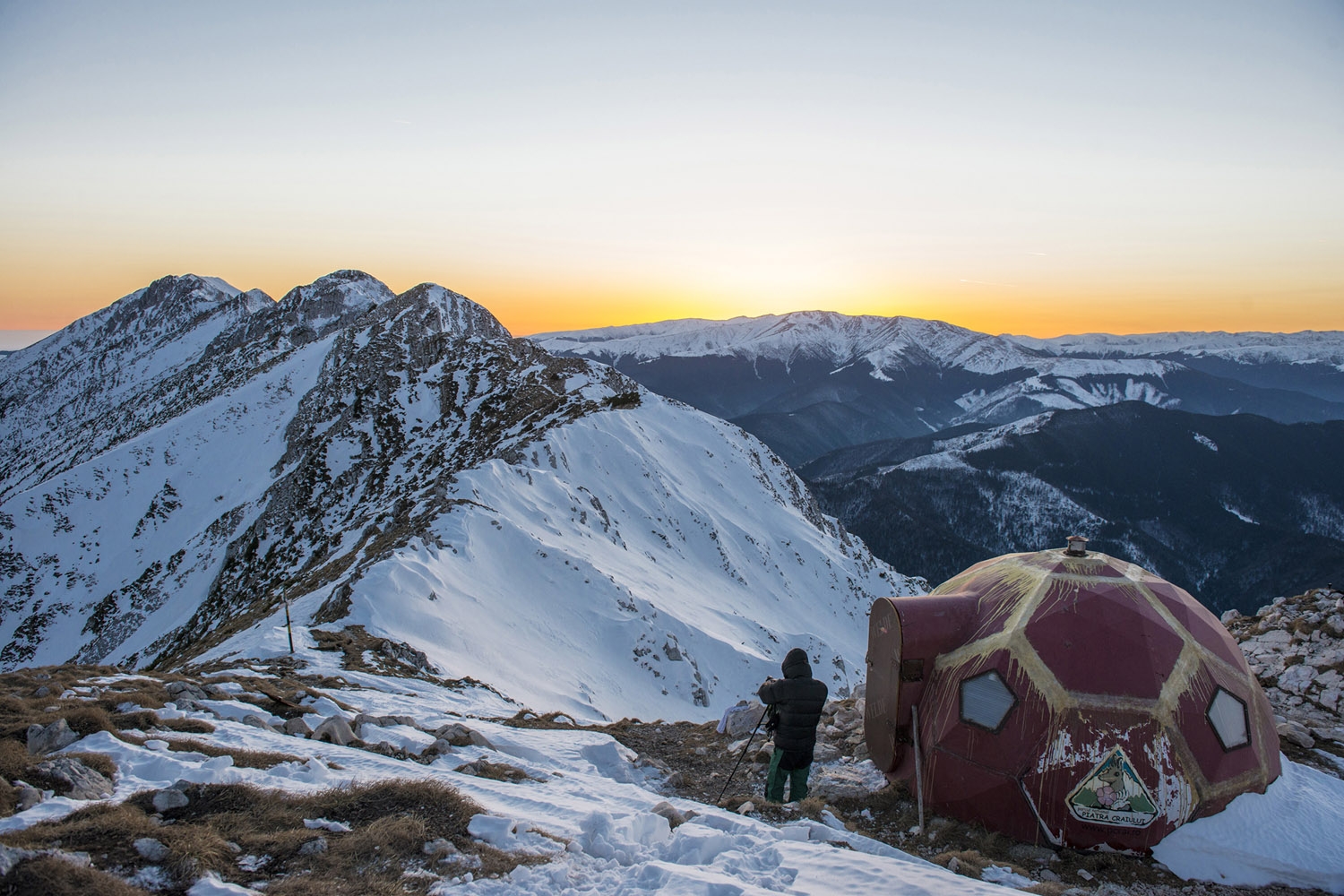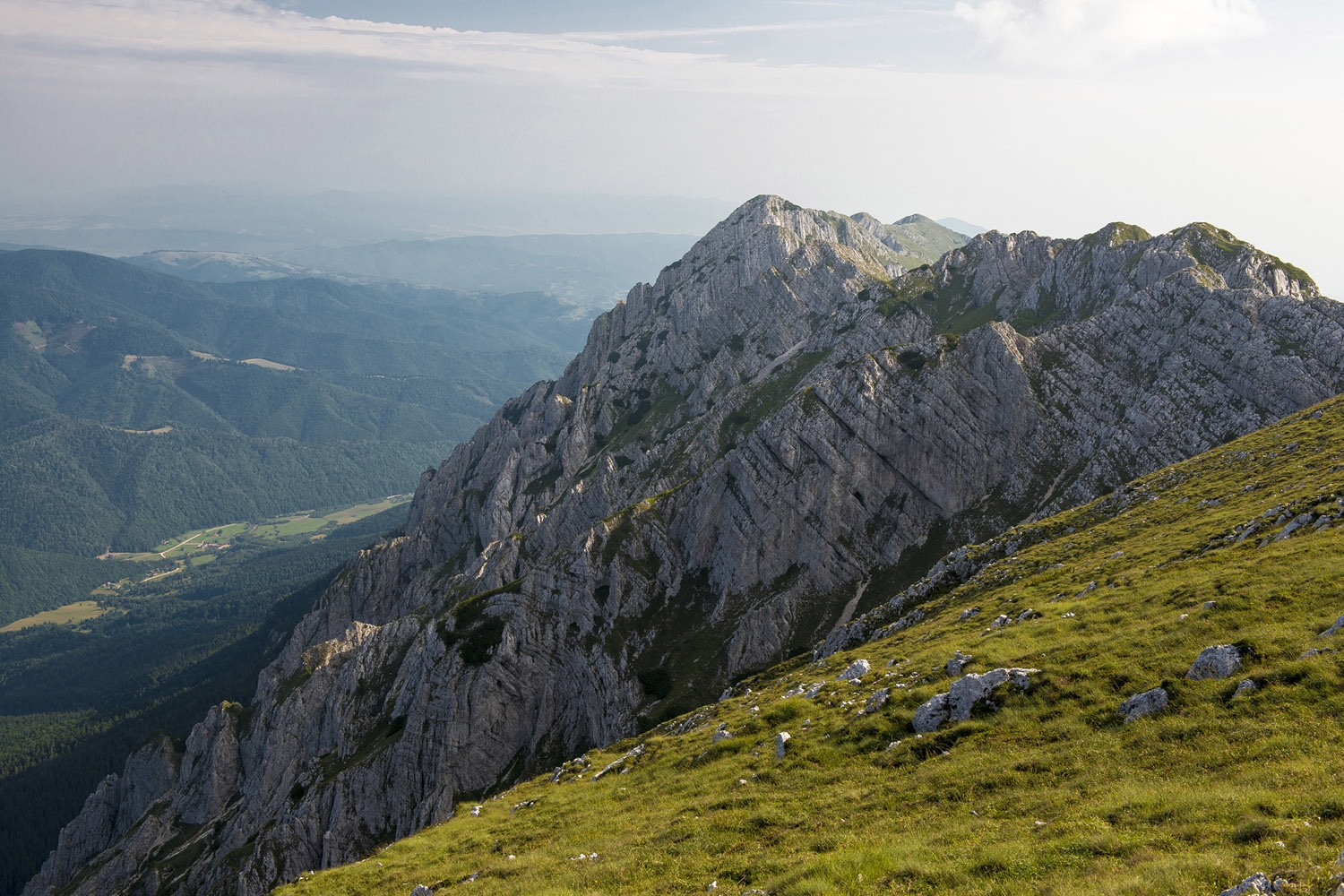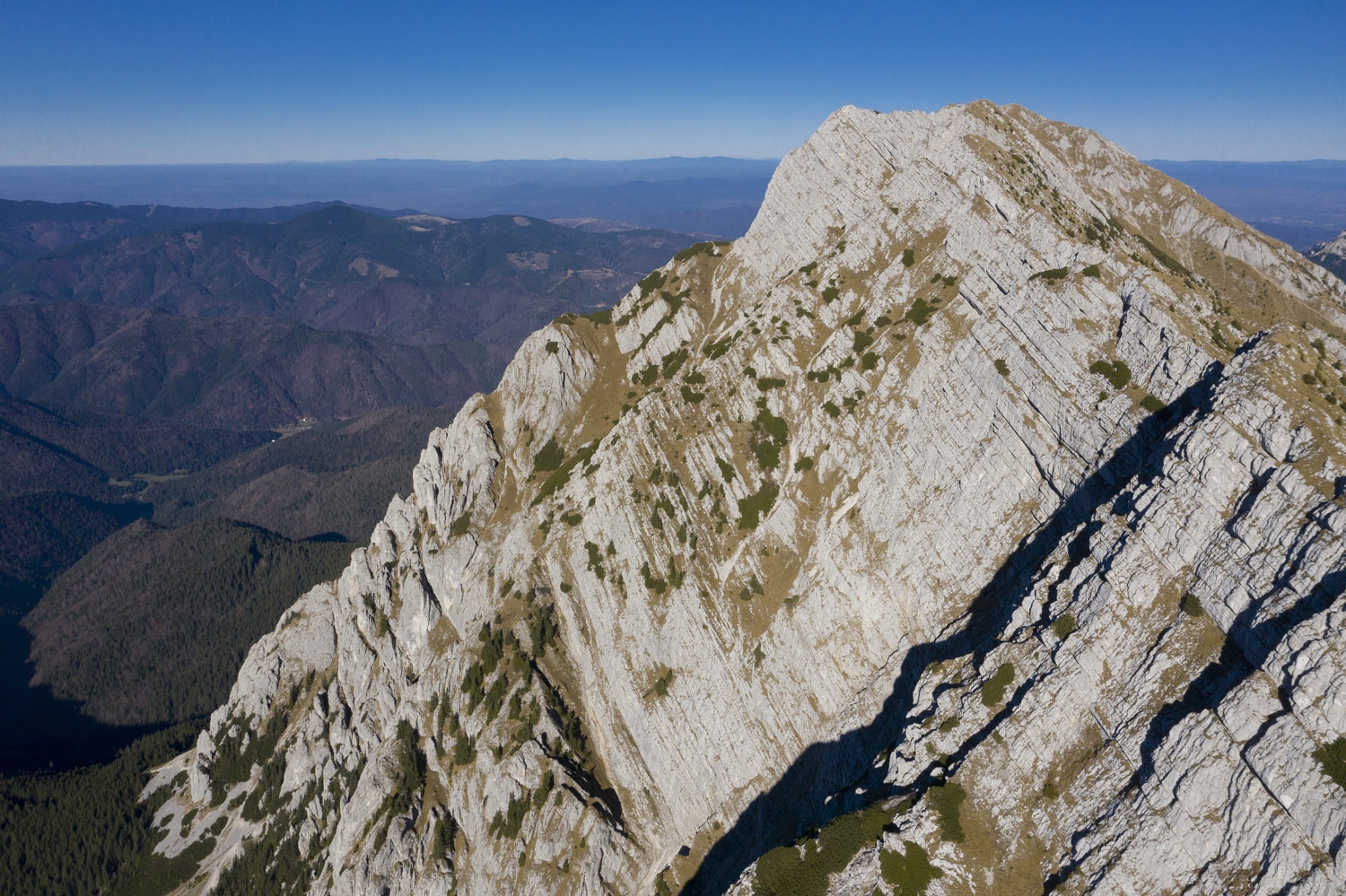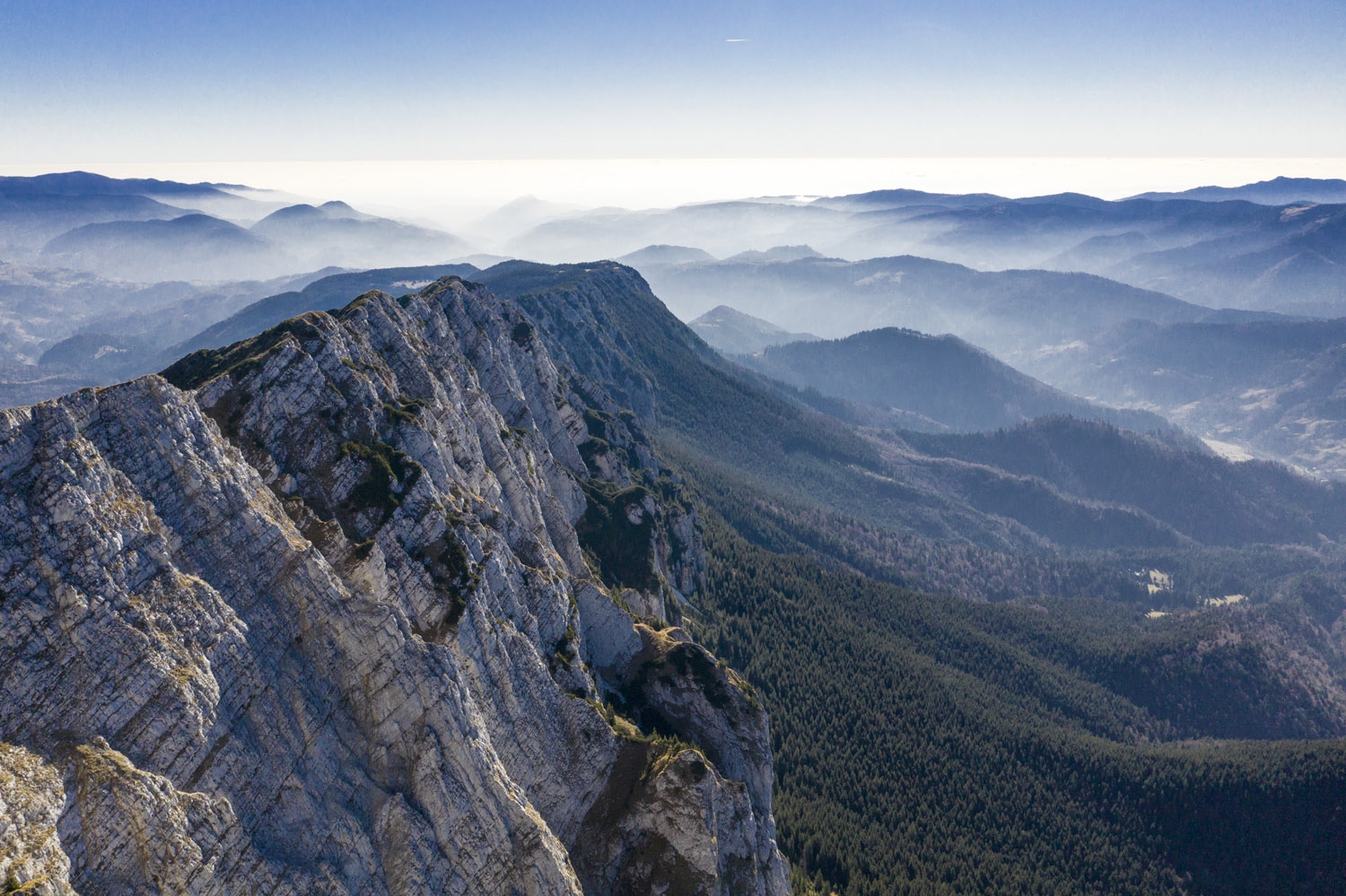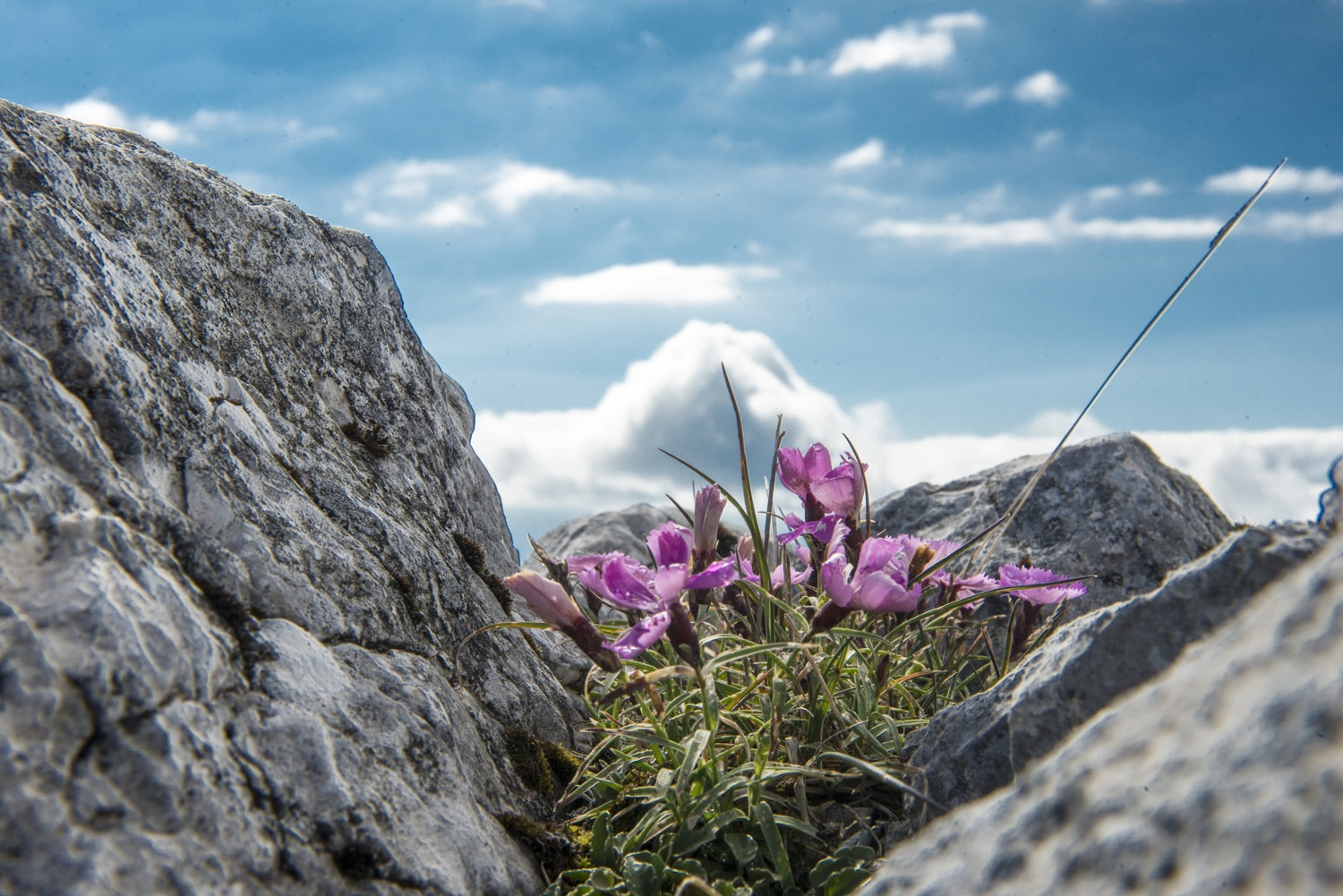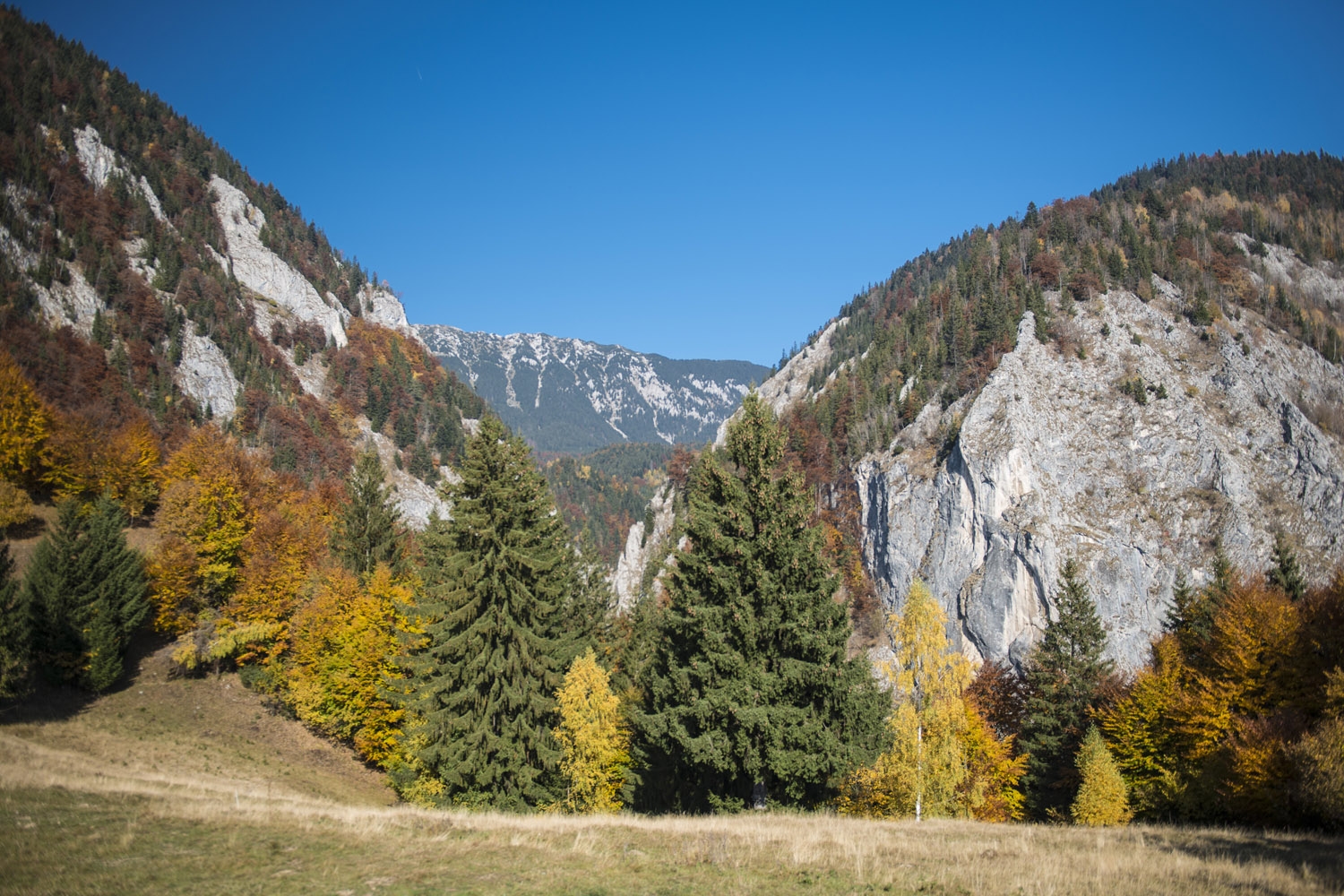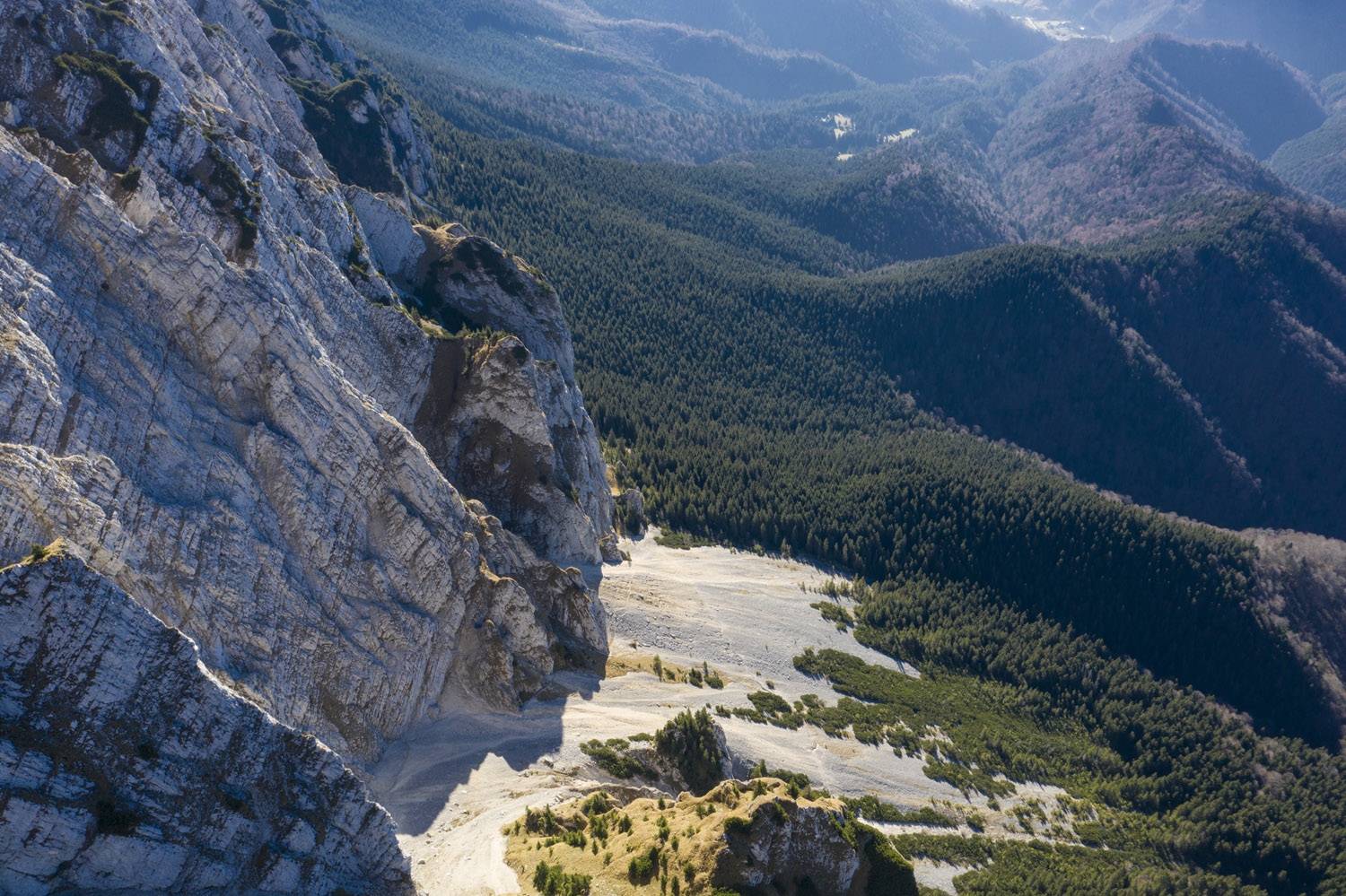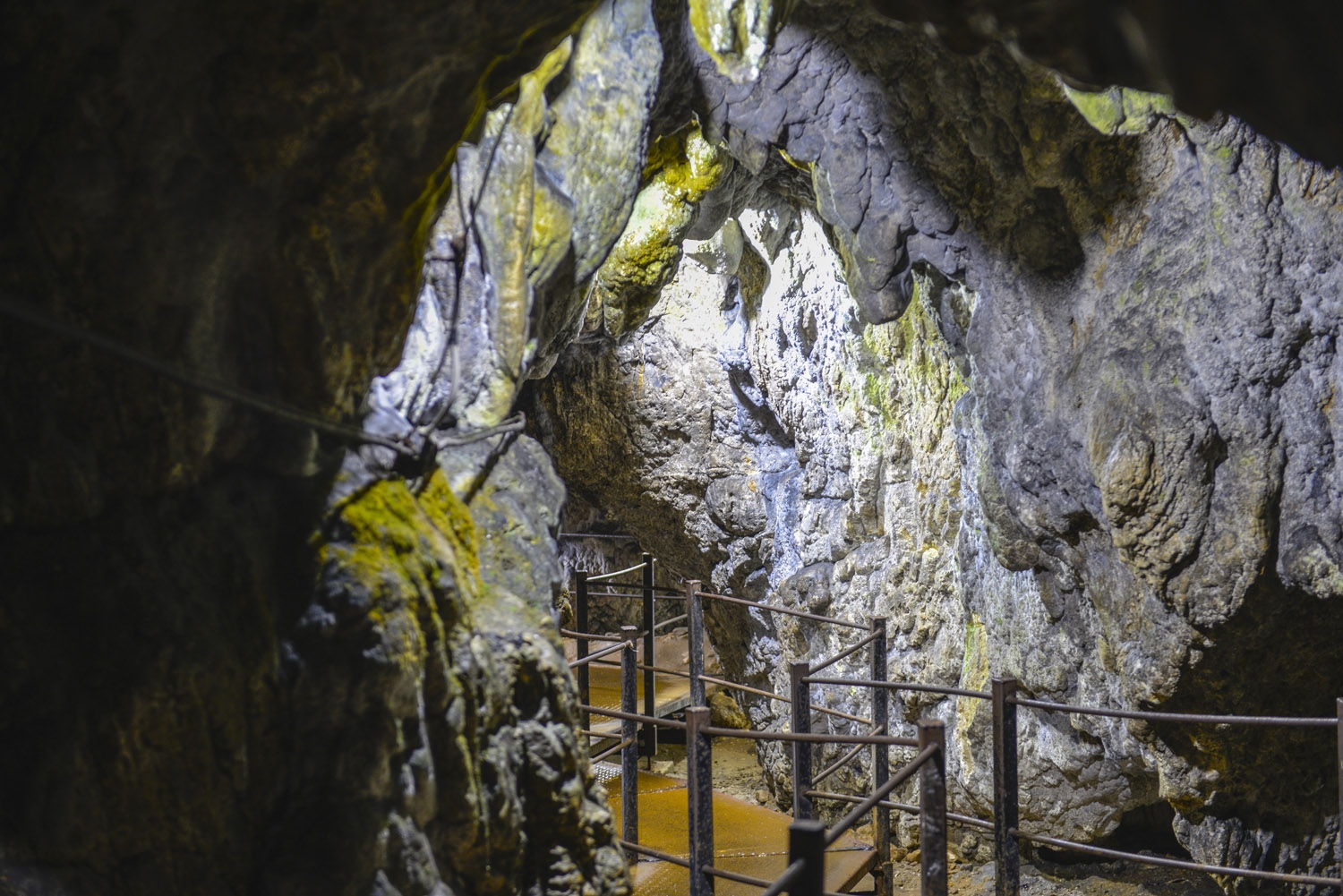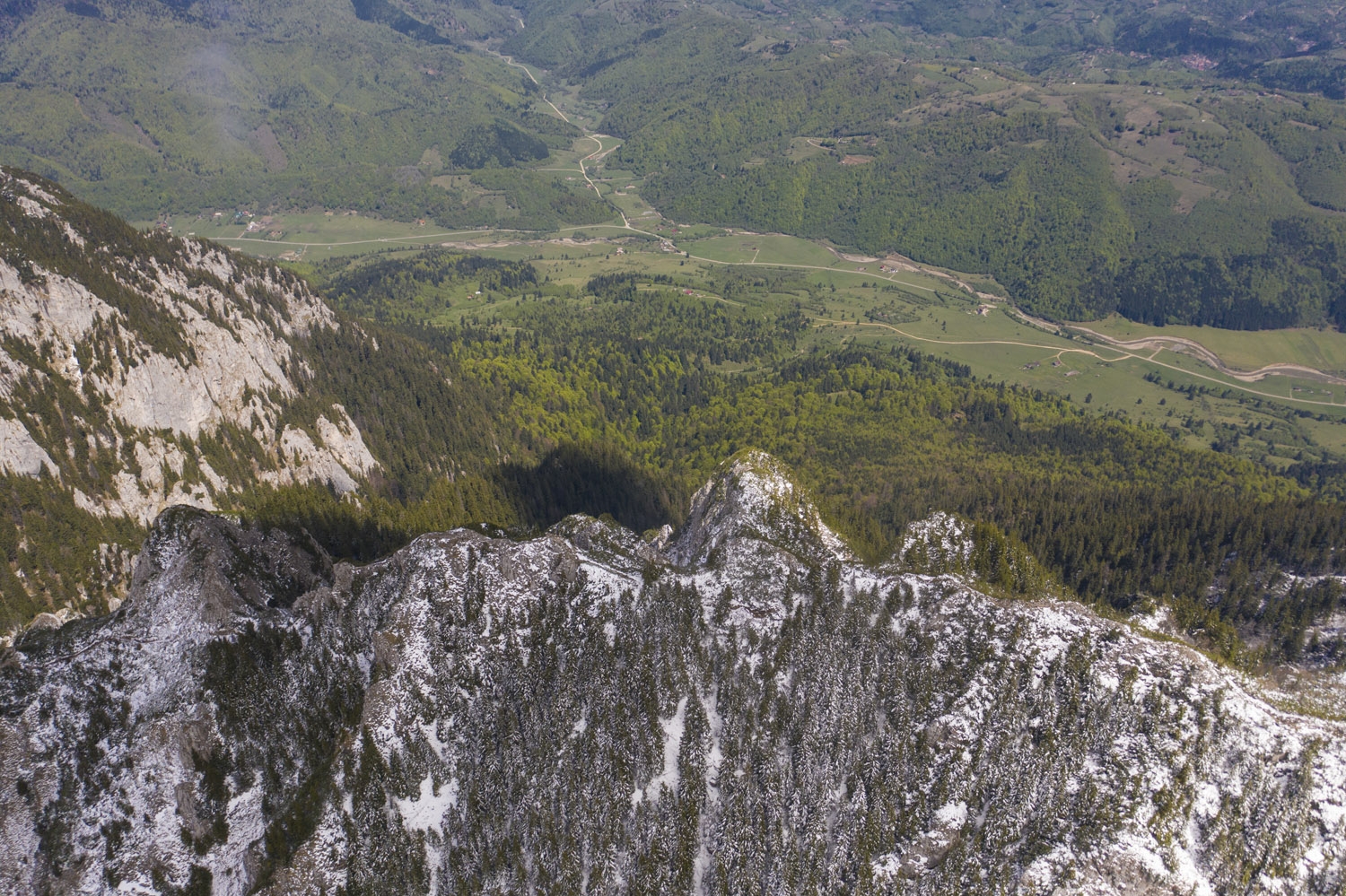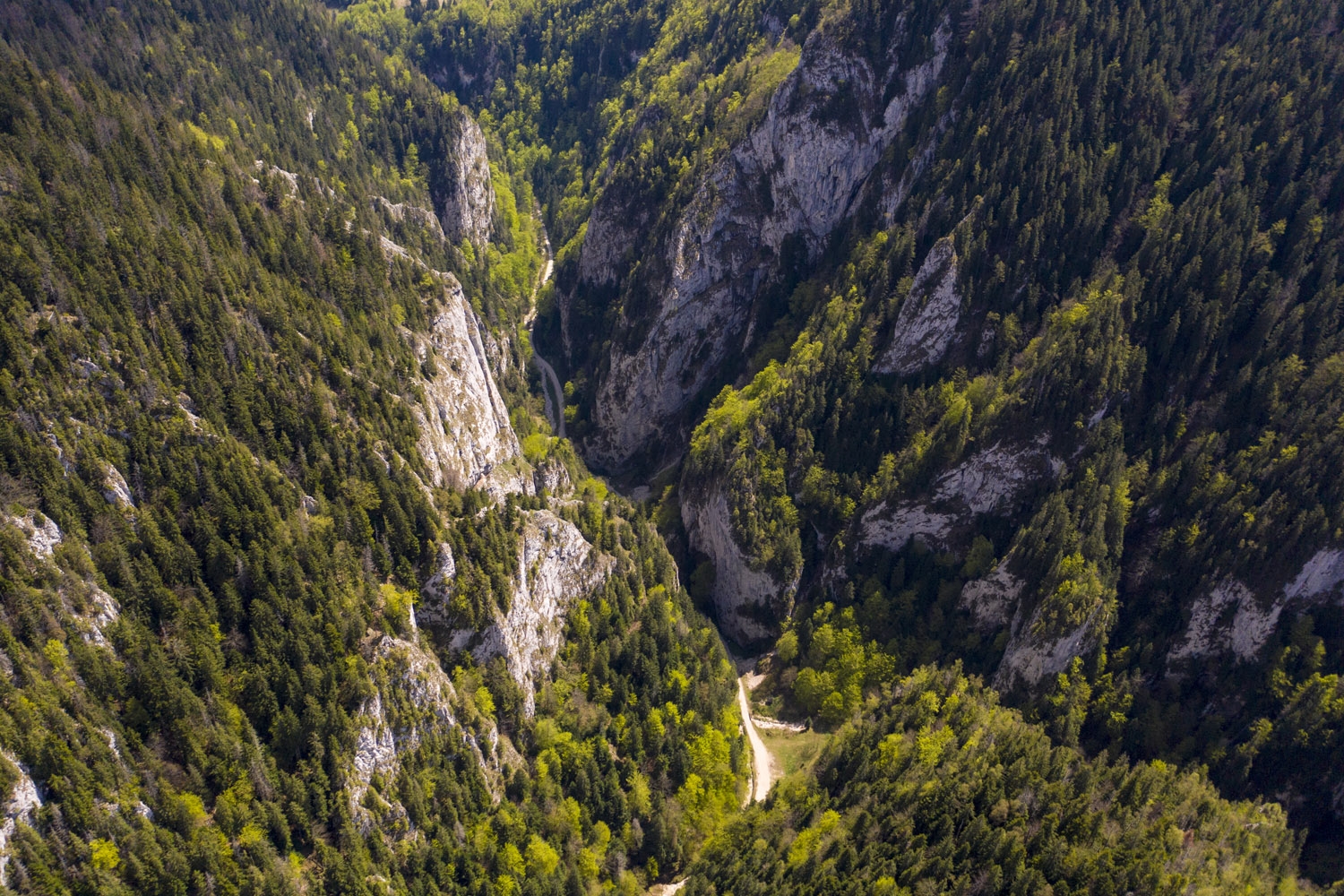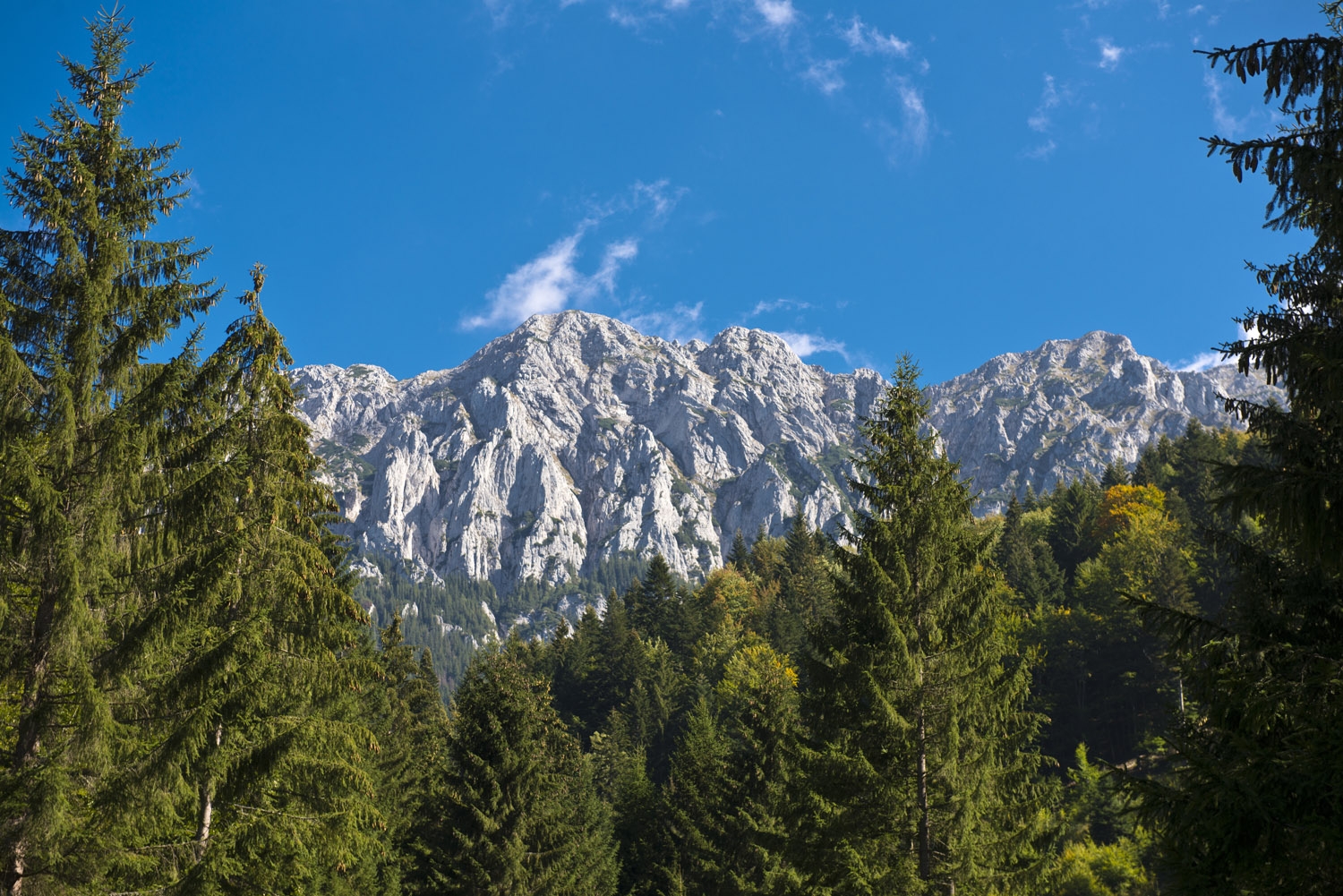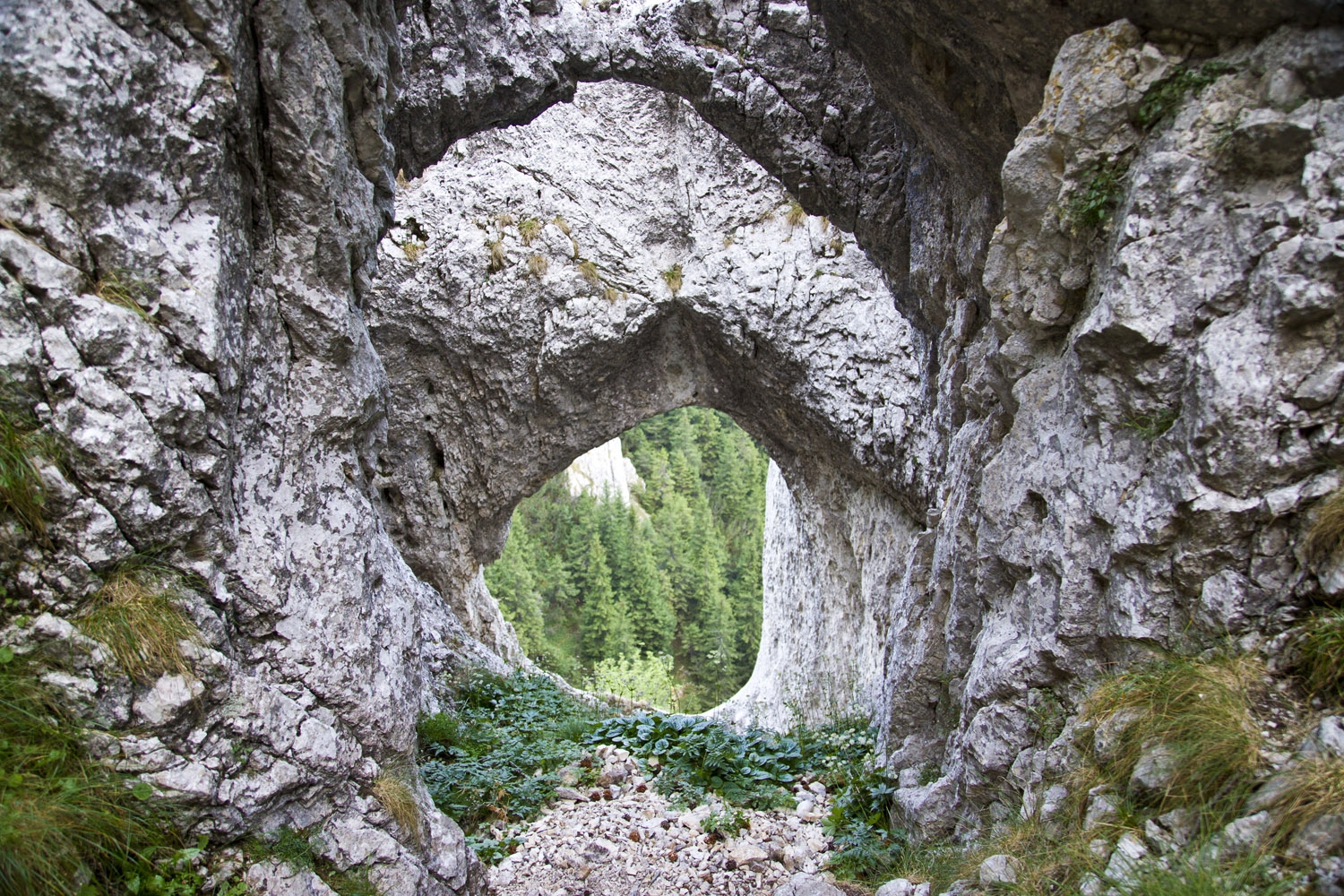Tourist Attractions in Piatra Craiului National Park
In Piatra Craiului National Park there are numerous tourist attractions, which can be discovered by hiking 42 tourist routes. The main objectives and attractions of Piatra Craiului National Park are the following:
Zarnesti Gorges
Zarnesti Gorges is an impressive sector of gorges that formed hundreds of millions of years ago and originally appeared as a torrent. The formation of the Gorge was accelerated due to limestone.
The total length of the Gorge is 3,9 km, the longest sector is Prapastiile Valley, with a length of 1,7 km. This sector is fascinating because it is narrow, it has vertical limestone walls, multilayer system of limestone, which according to some geologists are only found in these gorges. Also, the lucky ones can see chamois, which besides a rich fauna of mammals, complete the faunistic richness of the area.
There have been 4 phases in the development of Zarnesti Gorges:
- In the first phase there was a river having its course on sedimentary rocks, which deepened in limestone and evolved through the erosion process;
- In the second phase, called karstic catchment - the water flow gradually passed underground, creating a cave;
- In the third phase, called karstic collapse, the cave ceiling crashed and became a very narrow sector of gorges with vertical walls;
- And in the last phase, called current catchment, for the second time, the water flow passes underground.
In present time Zarnesti Gorges is a dry valley which is a living proof of the Jurassic geological processes.
Zarnesti Gorges tourist route is accessible for all tourist categories, including children and disabled individuals.
Piatra Craiului ridge
There are many tourist trails that lead to the ridge of Piatra Craiului massif and they are physically demanding, either the ascent is from the eastern or western slope. But once you reach the ridge, the spectacular, imposing and at the same time breathtaking landscape will be the one that will give you fulfillment.
The Piatra Craiului ridge is a unique mountain unit in the Carpathians. Its uniqueness lies in the fact that it is the highest and the longest calcareous massif in Romania.
It has a length of 25 km, with a maximum height at Baciului Peak - 2238 m. The name of the peak originated from sheep breeding which is a traditional activity in the area. The minimum altitude of 735 m is reached at the confluence between Dambovicioara and Dambovita rivers.
Screes
Scree represents a distinctive feature of Piatra Craiului massif. Enriches the landscape in a distinct way, both by quantity and variety.
In Piatra Craiului, screes can be found between 1280-2200 m, with the largest extent at the altitude 1745 m, in the following areas: „Marele Grohotis”, „La Zaplaz”, „Piatra Craiului Mica”, „Hornul Gainii”, „Padinile Frumoase”, at the bottom of „Umerii Pietrei Craiului”, „Varful Ascuţit”, „Varful Padina Popii” etc.
Screes can be fixed, mobile and semi-mobile. In Piatra Craiului mobile screes are predominant, which move on the valleys of both slopes and form the so called rock torrents.
Cerdacul Stanciului Arch
It is situated at the bottom of Piatra Mare western slope, at the altitude of 1720 m, and it is the biggest karstic arch in Piatra Craiului massif.With a circular-ovoid shape, it has a diameter of 9 m vertically and 12 m horizontally. Cerdacul Stanciului Arch is the most famous and impressive karstic formation in Piatra Craiului, resulting from an ancient cave ceiling which collapsed. The limestone block situated in the middle of the arch is a former portion of the caves ceiling.
Zaplaz Arch
Represents a succession of 4 arches remaining from an ancient cave, located on the west side of the ridge. The superior arch is the largest with 4 m in diameter and the smallest is the inferior one with 0,7 m.
Dambovicioara Gorges
They have a length of 2.4 km and their formation is the effect of the association between the action of surface and underground water flow. Compared to Zarnesti Gorges, from the northeast part of the national park, Dambovicioara Gorges had a faster evolution due to faults that attracted the underground water circulation.
By walking through the gorge one can discover an exposition of limestone and conglomerate sectors.
In the gorge there is also an attractive cave, Dambovicioara Cave, highly visited by tourists. It was formed in Jurassic limestone and has a total length of 555 m. Although the length of the cave is smaller than other caves in Romania, in this area is the longest. The cave’s gallery has widths which vary between 3-4 m and 4-5 meters high, with few ramifications of small sizes. After 150 meters from the entrance, the gallery narrows a lot. The existence of the cave was signaled from the 18th century when the locals used it as a hiding place from the invaders.
The mountain villages with scattered households on the hills, where the locals are still preserving old traditions, in harmony with nature, complete the list of tourist attractions that should not be missed when visiting the Piatra Craiului National Park.
Magura village is the destination of many tourists seeking the peace and harmony of the mountain villages. After 1820 the village gets its own identity and will be constantly a settlement. The possible recreational activities consist in hiking the tourist routes, mountain biking, discovering the way of life of the locals and sightseeing in the immediate vicinity of the village.
Pestera village, unlike Magura village which is entirely included in the national park, is only partially in the park. The village is at an altitude of 1,000 meters and offers picturesque landscapes and various possibilities for relaxation in nature. The oldest human settlement from the village was identified in the Bats Cave. Traces of human settlements have been discovered dating from the Paleolithic. Of course, this fact does not necessarily imply a continuous human presence in the cave.
A legend claims that in Pestera village, the Bats Cave was the hiding place of the rebel peasants. From here, if the soldiers were to catch them, they had a way out, just under Piatra Craiului mountain, in Vladusca pothole, through the galleries of the cave. Research carried out by speleologists seems to invalidate this hypothesis, the Bats Cave having no connection with the potholes in the eastern area of the massif.
Another legend refers to a rebel peasant / thief Stanciu Bratu. It is mentioned that the illegal activities he has done were located in Bran area, prior the middle of the nineteenth century. He had a sister named Stanca, of whom it was written that in the break-ins was fierce and valiant. Later on the Author Ion Ionescu-Dunareanu claimed that the toponyms from the south western part of Piatra Craiului, like „Cerdacul Stanciului”, „Stanciului Cave”etc. would refer to this peasant rebel who was hiding in this region.
Sirnea village is a neighbouring locality of Piatra Craiului National Park and is famous of being the first tourist village in Romania. Within a tourism promotion project, Nicolae Fruntes, a biology teacher in the village, arranged a museum in the local school. A 33 years old event called „Sirnea Olympic Days” is still organized in Șirnea. With this occasion various sport activities are held for pupils, on the 22-23 June.
Coltii Chiliilor Monastery
It is an Orthodox monastery situated at the bottom of the northern ridge of Piatra Craiului. As some authors claim the establishment of the monastery is linked to a Turkish invasion from 1421, when local people sheltered themselves in the mountain and used a cave as a praying place.
Today, at the location of the monastery there is a wooden church and its annexes. Not far from the monastery there is a cave where several icons are placed and a holy altar dedicated to the Holy Paraskeva.
Bran Castle
It is a very well known objective, both nationally and internationally, which is located in Bran village, 300 metres from the North – East limit of the Piatra Craiului National Park. The Castle was built between the years 1377 – 1382 and from historical point of view it had a strategic position. Initially the Castle was a military fortress, which in 1920 became a royal residence. Most tourists are visiting it because of „Dracula’s” legend, which in some cases creates a negative image over some animal species, like bats and wolfs, and can also create images according to which in the region there are dangerous supernatural elements. For either reason you are choosing to visit this Castle, due to it’s location, you will have historical, cultural, traditional and last but not least natural opportunities near Piatra Craiului National Park.
The Dugouts in Ciocanu
Ciocanu is a hamlet that belongs administratively to Dâmbovicioara village, situated near the old border between Romania and Austro – Hungarian Empire. It is a neighboring locality of the Piatra Craiului National Park, stretching East from it, on the mountain plateau between the Piatra Craiului massif and the Bucegi Mountains. It is located 3 km far from Dâmbovicioara village, at an altitude of over a thousand meters. In the past it belonged administratively to Rucăr village whose inhabitants were mainly free landowner peasants, members of the Rucăr collective land ownership.
In Ciocanu locality even today there are dugouts, defense walls and intact machine gun nests from the First World War. This was the area where the first battles of the Romanian Army took place for the liberation of Transylvania. The dugouts were restored in the summer of 2018 by the soldiers of Vânătorii de Munte „Sarmisegetusa” brigade 2, Brașov.
Richness in flora and fauna
On the surface of the park there are 1189 species of vascular plants, representing over 1/3 of all species in Romania, as well as important surfaces of beech forests and mixed forests.
Among these plants, the most known are: Piatra Craiului pink, strictly local endemic species, representing at the same time the floristic symbol of the massif, Edelweiss, Alpine poppy, Red vanilla orchid, Lady’s slipper orchid, Globeflower, Yellow Gentian etc.
Also, on the surface of the national park there is a rich population of large carnivores: bear, wolf and lynx, 21 bat species, 112 bird species and over 220 chamois
